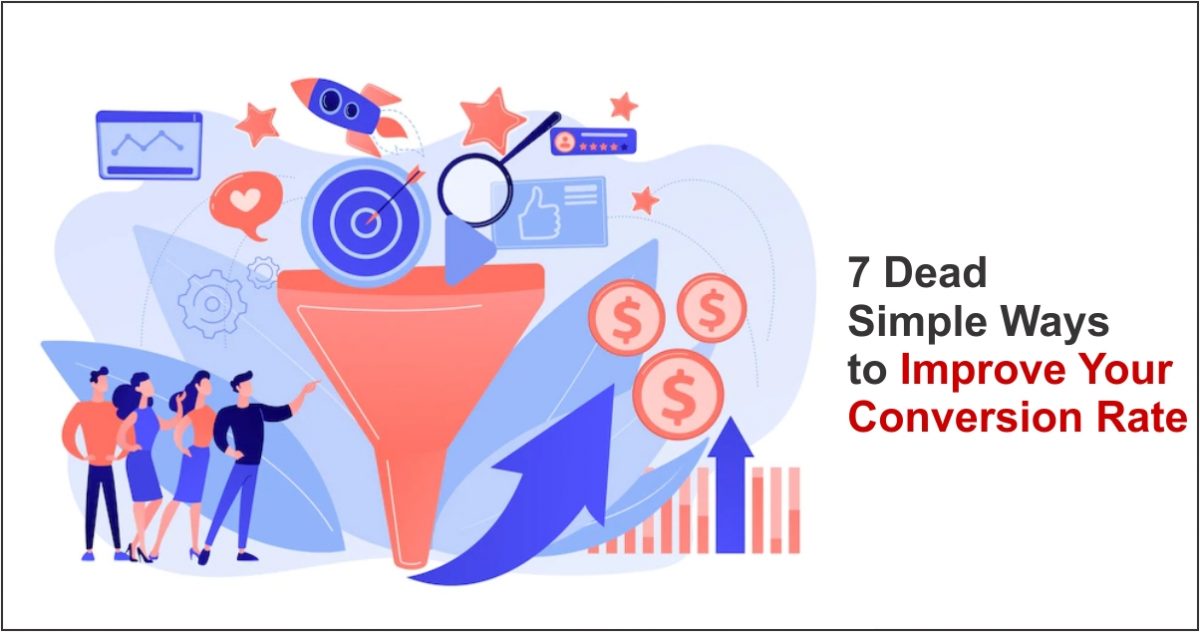Conversion rates are a key metric for any business with an online presence. They represent the percentage of visitors to your website or landing page who take a given action, such as making a purchase or subscribing to a newsletter.
Factors like web design, content quality, and target audience all influence conversion rates, and ultimately determine your website’s success. Whether you’re launching an online side hustle or scaling an existing business, there are a number of simple techniques you can try. Here are seven simple ways to quickly improve your conversion rate:
1) Track and Monitor Analytics
If you don’t track your website’s analytics, you won’t be able to accurately measure your conversion rate or determine how to improve it. Not sure where to start? Google Analytics is a free and easy-to-use tool that can help you start tracking your website’s traffic and performance.
<p.Use Google Analytics for insights into how people interact with your website, and then implement changes. Keep an eye on key metrics like bounce rates, scroll behavior, and average session duration. These statistics, among others, may indicate where to focus further conversion rate optimization efforts.
2) Improve Page Speed
Slow loading times can be a major deterrent for website visitors. In fact, Kissmetrics reports that 40% of people will abandon a website that takes more than three seconds to load. To measure your website’s speed, try Google’s PageSpeed Insights, Pingdom, or GTmetrix.
If your website is running slowly, potential causes include large images, unoptimized code, and excessive plugins. To decrease website load time, you can try compressing images or minifying code.
3) Remove Friction and Distractions
Your website should be designed with an objective in mind. To achieve that goal, remove any unnecessary steps or frictions that could deter visitors from converting.
For example, if you’re selling products on your website, the checkout process should be as streamlined as possible. Minimize the number of pages required to checkout, don’t require accounts, remove unnecessary fields, and use auto-fill if possible.
In addition, you should remove any distractions that could lead customers away from your conversion goal. This includes things like pop-ups, banner ads, and social media widgets.
Some conversion rate experts even suggest removing your website’s header or footer. To test these experiments, consider using a landing page builder to customize individual pages.
4) Build Trust
If you’re selling products or services on your website, it’s important to build trust with potential customers. One of the best ways to do this is by including customer testimonials on your website. Carefully curate and select these reviews to answer any questions or objections a new visitor may have.
You can also try adding trust seals from third-party organizations, such as the Better Business Bureau or TRUSTe, or logos from past clients or media outlets that have featured your business.
Another way to create trust is to offer a money-back guarantee. This promise shows that you are confident in your product or service and you are willing to stand behind it. This could be a major selling point for new customers who are on the fence about making a purchase.
5) Create Urgency
Creating a sense of urgency can prevent customers from exiting your website to shop around. This may involve adding countdown timers, highlighting low stock levels, or using scarcity language.
You can also experiment with giving customers an incentive to buy now rather than later. These limited-time offers could take the form of free shipping, a discount code, or a complimentary gift with purchase.
Throughout your copy, use words like now, fast, quick, hurry, close, never, and over. Causing your visitors to think about time can compel action and improve conversion rates.
6) Capture Contact Information
If you’re having difficulty getting visitors to convert, you may want to consider capturing contact information earlier in the funnel. This way, even if visitors don’t take immediate action on your website, you will have a way to reach out to them and continue marketing to them.
Live chat, on-page forms, and lead capture pop-ups are all excellent ways to capture the phone numbers and/or email addresses of potential customers. To encourage sign-ups, offer a freebie or discount as an incentive.
This type of exchange is known as a lead magnet, and it’s an effective way to quickly grow your contact list and make the most of your existing traffic.
7) A/B Test Strategically
A/B testing is a great way to identify which elements of your website are most effective in driving conversions. You can test things like your headline, call-to-action, and images to see what your audience responds to.
It’s important to test one element at a time, as changing multiple elements at once can make it difficult to identify which change had the desired effect. A/B testing can be time-consuming, but even the smallest increases in conversion rates can make a significant impact.
Start each A/B test with a hypothesis – perhaps a certain color, button size, or value proposition is expected to better resonate with visitors. Regardless of any individual outcome, this practice will help you develop a deeper understanding of your audience over time.
Summary
There are many ways to improve your conversion rate. Begin by properly implementing analytics tracking and then use best practices to simplify the design and improve the copy of your website. From there, you can experiment with other strategies to see what works best for your business and your customers.
By continuously iterating on your website, you can convert larger amounts of traffic into paying customers and grow your business.


